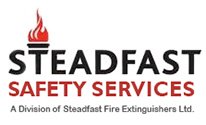The prevalence of fires in the recent years has seen a raft introduction and adoption of fire protection standards as well as codes. These are governed by regulatory bodies as well as local authorities. The codes and standards define the fire protection elements which should be adopted in a building. They also define the kind of equipment to be used, the quality and quantity as well as how the equipment will be used. This is the same case for the standards that are applied to the sprinkler systems. Since the standards are constantly being upgraded while different areas use different standards, it is important to get an installation company that is knowledgeable and updated about the latest practices and standards used in your area.
Standards & Codes
The first thing to know are the various standards and codes used for sprinkler systems. In Canada, the National Building Code and the Ontario building code all reference to the USA’s National Fire Protection Agency Standard 13 of NFPA-1999. The main section they borrow is what covers fire sprinklers and the sections are:
- Standard for the Installation of Sprinkler Systems
- NFPA 13R, Standard for the Installation of Sprinklers in Residential Occupancies up to Four Stories
- NFPA 13D, Sprinkler Installation in One and Two Family Dwellings
Designers and developers are also at liberty to use the updated Standard 13 of NFPA-2002. The updated version seeks to close any loopholes of previous versions and at times may prove more helpful. As already noted, the standards and codes affect a great deal, the use and design of sprinkler systems.
Architectural Designs & Structures
Places like attics which are made of non-combustible steel or concrete construction do not have to be covered by fire sprinklers. On the other hand attics made of wood framings need to have sprinklers. Another issue with architectural design are slopes of a roof. Placing a sprinkler at an angle to the flow affects the effectiveness of its water throw by reducing it. Thus special considerations have to be made for pitches higher than 2-in -12.
Type of Sprinkler Used For Every Situation
The NFPA standards provide the parameters under which a project is to be designed. This in turn determines the kind of sprinklers that will be used in any project. The sprinkler head used determines whether the project meets the set standards or not. Newer and technically superior sprinkler heads allow you use a low flow rate as well as fewer heads but still provide more coverage. The number of heads or flow rate may not be what is recommended in the standards but the safety level is maintained or even increased past the threshold set by the standards. The new products may appear expensive at first but with fewer heads and less piping they can result in cheaper installation costs and still meet the set standards of sprinkler systems.
To further provide guidance on the different standards of fire sprinkler systems, new sprinkler heads come with a designated SIN number. The number indicates all the characteristics of the sprinkler head and its abilities.





